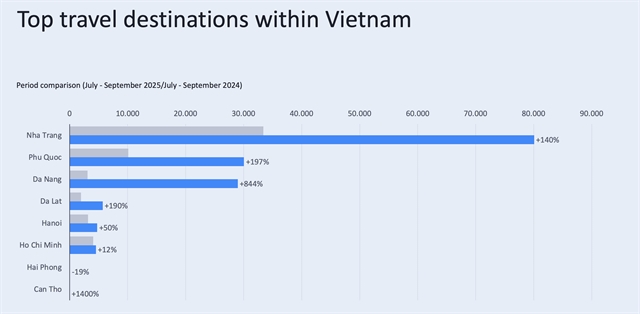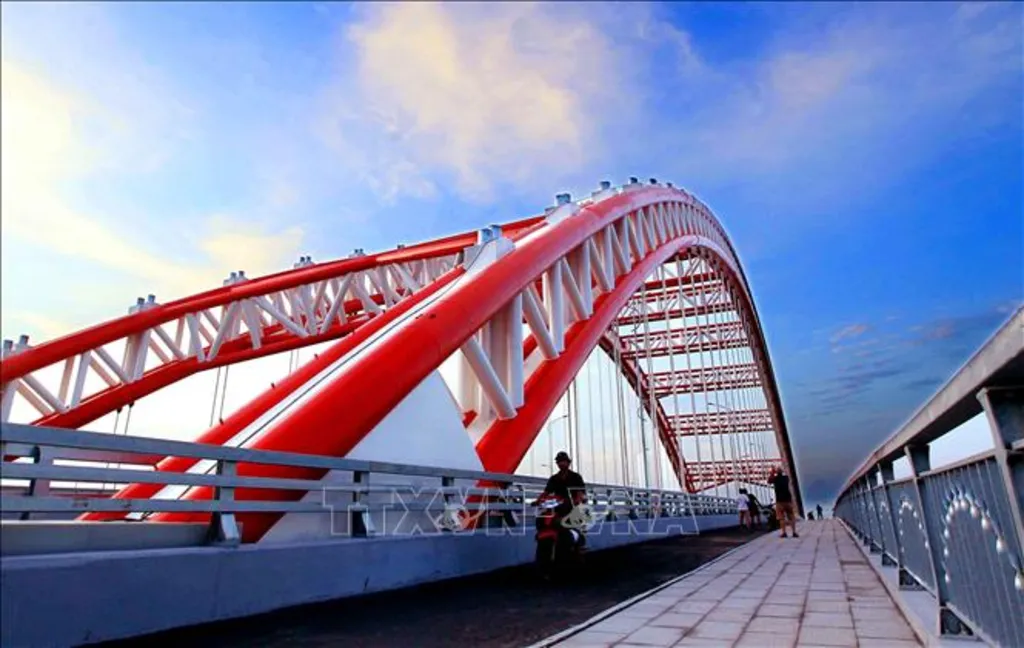 Economy
Economy

 |
| Hoàng Văn Thụ Bridge in Hải Phòng City. The Ministry of Planning and Investment will focus on creating infrastructure development breakthroughs and public investment disbursement to drive economic growth this year. — VNA/VNS Photo Trọng Luân |
{ "id": "9kCimX7MUk", "type": "myToolImages", "data": { "data": "" } }
HÀ NỘI — Prime Minister Phạm Minh Chính has asked the Ministry of Planning and Investment to enhance the business environment to utilise resources more efficiently for socio-economic development.
PM Chính was speaking at a conference held by the Ministry of Planning and Investment on Wednesday to begin the implementation of tasks for 2023.
The Prime Minister emphasised the need for the ministry to continue to work towards better consulting, planning, and macroeconomic management. He stressed the importance of closely monitoring regional and global developments, predicting and warning of potential challenges and opportunities, developing proactive scenarios to advise the government on solutions for implementing resolutions, and promptly responding to market fluctuations at home and abroad to promote growth and control inflation.
The focus must be placed on removing difficulties for enterprises and residents to promote production and business together with improving the institutions, mechanisms and policy framework, PM Chính said.
He urged attention to promoting entrepreneurship, innovation, application of science and technology, development of a digital economy, green economy, circular economy and labour productivity.
With an excess of VNĐ292 trillion in budget revenue in 2022, the Prime Minister said that this resource should prioritise urgent and unexpected issues and strategic transport infrastructure to fulfil the goal of the 13th National Party Congress that Việt Nam would have 3,000km of highways by 2025 and 5,000km by 2050, to create space and a new driving force for the country’s future development.
Regarding public–private investment, Chính said there was still significant room to promote public–private partnerships to raise resources for development. However, the institutions for public–private partnerships were falling behind the demand.
Chính also asked the ministry to strengthen digital transformation in all fields and improve the quality of statistical work.
Speaking at the conference, Minister of Planning and Investment Nguyễn Chí Dũng said that the ministry determined the motto for action in 2023 to be “Seizing opportunities – Towards the future”, adding that in difficulties, there were always opportunities.
Dũng said the workload of the ministry in 2023 was heavy.
Firstly, the ministry must complete and submit for approval all unfinished planning.
Currently, five regional plannings and 42 provincial–level plannings must be completed together with more than 30 industry plannings which the ministry was joining with other ministries and agencies to develop.
Although time was tight, Dũng said that the quality of planning must always be put first, and this must be considered an opportunity to organise and rearrange the development space, promote the potential and advantages of each region, locality, industry and sector to create impetus and new growth poles for the country.
Another important task of the ministry this year was to complete the construction of the National Innovation Centre and innovation centres in provinces and cities throughout the country; more importantly, it was to build and develop an innovation ecosystem and improve linkage with the leading innovation centres and ecosystems in the world.
The innovation would focus on promoting green development trends and digital transformation in Việt Nam.
As 2023 was forecast with more difficulties, challenges and uncertainties than 2022, the ministry would focus on contributing to keeping the macro-economy stable, controlling inflation and ensuring economic growth at a reasonable rate.
Another important task was to accelerate and transform the economy’s structure, renew the growth model, and improve institutions and policies for new economic models such as the night economy, sharing economy, green economy, circular economy and the new development trends of green energy and liquefied hydrogen.
The strategic objective was to green the economy and improve the economy's internal capacity, autonomy and competitiveness, Dũng stressed.
He said the focus would also be creating breakthroughs in infrastructure development and the disbursement of public investment.
Although 2022 had been a difficult year, Việt Nam’s macro-economy was kept stable with positive economic growth and inflation under control, in which the Ministry of Planning and Investment played an important role.
Statistics showed that in 2022, the Vietnamese economy expanded at 8.02 per cent, the highest growth recorded in the 2011-22 period thanks to post-pandemic solid recovery and higher than the target set at 6-6.5 per cent.
The consumer price index was estimated at 3.1 per cent, below 4 per cent as the goal set. — VNS